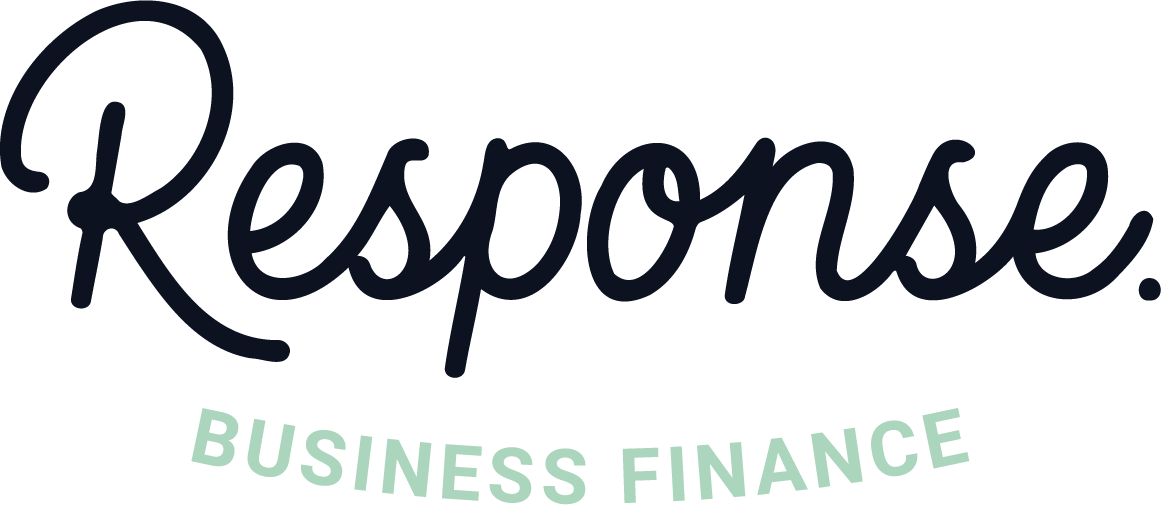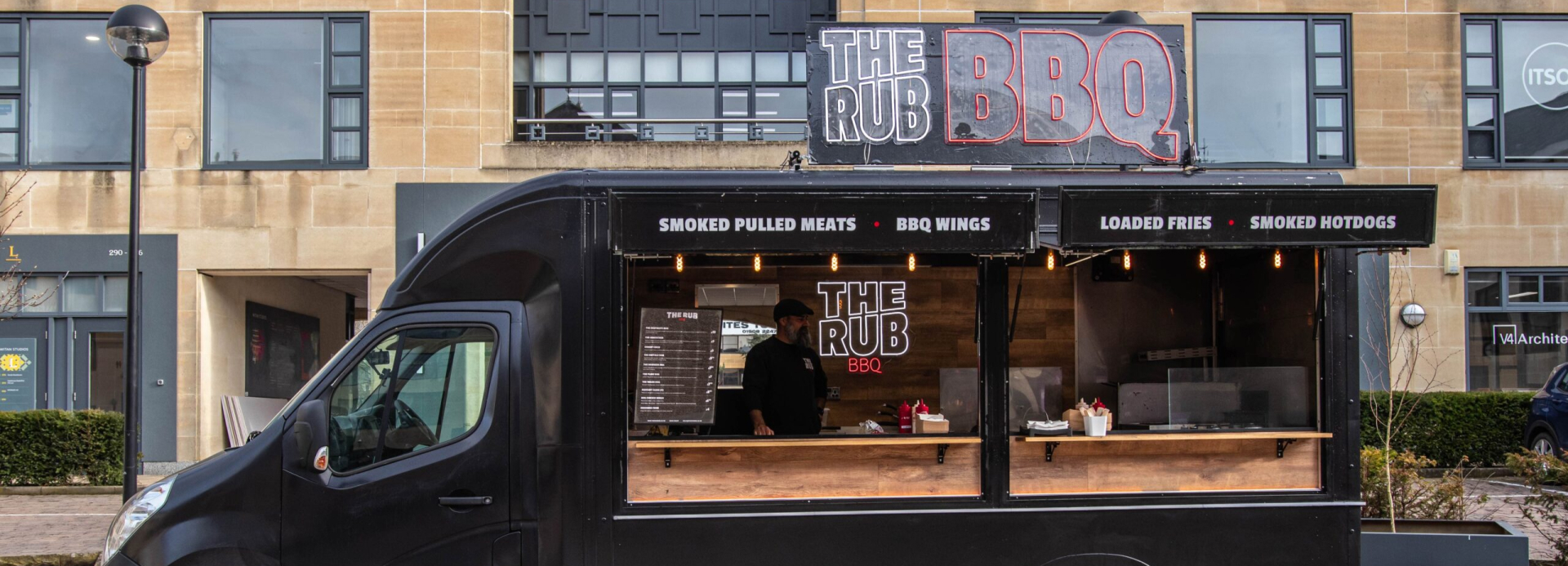
Blog Article by Response Business Finance
Short Term Business Loan Costs: Rates, Fees & True Cost Breakdown
Need quick cash for your business but worried about what it’ll really cost? Short term business loans can be a lifeline when you need funds fast, but the true cost goes way beyond the interest rate you see advertised.
Here’s the reality: A loan with a 15% APR might end up costing you far more than one at 20% once you factor in origination fees, repayment terms, and hidden charges. This guide breaks down every cost you need to know about, with real examples and calculations, so you can work out exactly what you’ll pay before you sign anything.
What Is a Short Term Business Loan?
A short term business loan is funding you borrow and repay within 3 to 18 months, though some lenders stretch this to 24 months. Unlike longer-term loans that might run for several years, these are designed for immediate needs like covering cash flow gaps, buying stock, or handling unexpected costs.
The shorter repayment period means higher monthly payments but less total interest paid over time. For businesses that need capital quickly without committing to years of debt, short term loans offer speed and flexibility.
Common uses include:
If you’re wondering whether short term funding is right for your situation, it’s worth understanding your full range of business finance options.
How Much Do Short Term Business Loans Really Cost?
Not every cash crunch needs emergency finance. But certain situations genuinely call for fast action.
In the UK, short term business loan interest rates typically range from 8% to 50% APR, depending on your business profile, credit history, and the lender you choose. Unsecured short term loans usually sit between 12% and 30% APR, while secured options can offer rates as low as 8% to 15% APR.
But here’s the catch: the interest rate is only part of the story. The true cost comes from combining the interest with all the fees, the repayment structure, and the loan term. Two loans with identical interest rates can have vastly different total costs.
Fixed vs Variable Rates
Fixed rates stay the same for the entire loan term. Your monthly repayments won’t change, making budgeting easier. Most short term business loans use fixed rates.
Variable rates can go up or down based on market conditions like the Bank of England base rate (currently 4%). While rare in short term lending, they’re sometimes offered on longer facilities. Variable rates carry risk, especially if the base rate rises during your loan term.
Understanding Factor Rates vs APR
Here’s where short term loans get confusing. Some lenders, particularly those offering merchant cash advances or very short term loans, use factor rates instead of APR. Factor rates look deceptively cheap but can be far more expensive than they appear.
What Is a Factor Rate?
A factor rate is expressed as a decimal, typically between 1.1 and 1.5. Unlike APR, it’s not based on time. It’s a multiplier that determines your total repayment upfront.
How to calculate it: Loan Amount × Factor Rate = Total Repayment
Example:
That looks like 30% interest, right? Not quite. Because factor rates are calculated upfront on the full amount (not on the declining balance like APR), the effective annual cost is much higher.
Converting Factor Rates to APR
If you repay a £20,000 loan with a 1.3 factor rate over 12 months, your effective APR could be 60% or higher. If you repay it in 6 months, the APR is even higher because you’re paying the same fixed cost over less time.
Why this matters: Lenders using factor rates often present them as “straightforward” and “transparent,” but they can work out significantly more expensive than loans with traditional APR, especially for repayment periods under 12 months.
Always ask the lender to show you the effective APR or total amount repayable so you can compare like-for-like. If you’re comparing different funding options, a broker can help you cut through the jargon and find the best deal for your situation.
The Complete Cost Breakdown: What You’ll Actually Pay
Let’s break down every cost component of a short term business loan so you know exactly what to expect.
1. Interest Charges
This is the main cost. Interest is what the lender charges you for borrowing money, calculated as a percentage of the loan amount. For short term loans:
The shorter your loan term, the less total interest you pay—but your monthly payments will be higher.
2. Origination Fees (Arrangement Fees)
Many lenders charge an upfront fee to set up your loan, typically 1% to 5% of the loan amount. This covers their admin costs, credit checks, and underwriting.
Example: On a £50,000 loan with a 3% origination fee, you’ll pay £1,500 upfront. Some lenders add this to your loan balance, meaning you pay interest on the fee too.
Not all lenders charge origination fees, so always check. If one lender charges 15% APR with a 3% fee and another charges 18% APR with no fee, the second option might be cheaper overall.
3. Monthly Service or Admin Charges
Some short term loan products, particularly revolving credit facilities, charge regular monthly fees regardless of how much you draw down. These can be:
These fees add up quickly and can significantly increase your total cost, especially if you’re not using the full facility.
4. Early Repayment Fees
Paying off your loan early sounds like a good idea, but some lenders charge early repayment penalties to recover the interest they’d have earned if you’d stuck to the original term.
These fees can be:
Many modern lenders don’t charge early repayment fees, so this is worth asking about upfront. If you expect to repay early (perhaps from a big customer payment or seasonal revenue), make sure your loan allows this without penalty.
5. Late Payment Fees
Miss a payment or pay late, and you’ll face charges. Late fees typically range from £25 to £100 per missed payment, and repeated late payments will damage your credit score, making future borrowing more expensive.
Setting up a direct debit for your repayment date is the easiest way to avoid these charges.
6. Broker Fees
If you use a broker to find your loan, some charge fees for their service. However, reputable brokers like Response Business Finance don’t charge business owners upfront fees. They’re paid by the lender once your loan completes.
Always clarify fee structures before working with a broker. Avoid anyone who asks for payment before securing your funding.
Worked Example: The True Cost of a £30,000 Short Term Loan
Let’s see how these costs stack up with a real example.
Loan details:
Monthly repayment: £2,759
Total repayment over 12 months: £33,108
Total interest paid: £3,108
Origination fee: £600
True cost of the loan: £3,708 (£3,108 interest + £600 fee)
You’re paying £3,708 to borrow £30,000 for one year.
That works out to 12.36% of the loan amount in total costs.
Now let’s compare this to a 6-month loan:
Loan details:
Monthly repayment: £5,379
Total repayment over 6 months: £32,274
Total interest paid: £1,674
Origination fee: £600
True cost of the loan: £2,274 (£1,674 interest + £600 fee)
By repaying over 6 months instead of 12, you save £1,434 in total costs. The monthly payments are higher, but if your cash flow can handle it, shorter terms save money.
How Loan Terms Affect Your Total Cost
The length of your loan has a massive impact on what you pay.
Shorter terms (3 to 6 months):
Longer terms (12 to 18 months):
There’s no “right” answer. It depends on your cash flow patterns. If you’ve got a big contract coming in next quarter, a 6-month loan might work brilliantly. If your revenue is steadier but tighter, spreading repayments over 12 months might be more realistic.
Hidden Costs to Watch Out For
Beyond the obvious fees, there are some less visible costs that can catch business owners out.
Balloon Payments
Some short term loans require a large lump sum payment at the end of the term, known as a balloon payment. Your monthly payments might look manageable, but if you’re hit with £10,000 due in month 12, it can create serious cash flow problems.
Always check the repayment structure. If there’s a balloon payment, make sure you’ll have the funds available when it’s due.
Daily vs Monthly Interest
Most short term business loans charge interest monthly, but some (particularly merchant cash advances) calculate interest daily. While this can work in your favour if you repay quickly, it also means interest compounds faster if repayment drags on.
Personal Guarantees
Many short term lenders require a personal guarantee, especially for unsecured loans. This isn’t a direct cost, but it’s a significant risk. If your business can’t repay the loan, you’re personally liable for the debt, which could mean your home or personal assets are at risk.
Make sure you understand what you’re signing. If you’re uncomfortable with a personal guarantee, look for secured lending options where business assets (not personal ones) are used as collateral. Asset finance can be a safer alternative if you’re buying equipment or vehicles.
How to Calculate the True Cost Before You Borrow
Don’t rely on the advertised rate alone. Here’s how to work out the real cost of any short term business loan offer:
Step 1:
Get the total repayment amount from the lender (not just the monthly payment).
Step 2:
Add all fees:
Step 3:
Subtract the loan amount from the total repayment plus fees:
Total Cost = (Total Repayment + All Fees) – Loan Amount
Step 4:
Divide the total cost by the loan amount and multiply by 100 to get the percentage cost:
Percentage Cost = (Total Cost ÷ Loan Amount) × 100
This gives you a clear, comparable figure across different lenders and products.
Most lenders should be able to provide a total repayable figure in your quote. If they can’t or won’t, that’s a red flag.
What Affects Your Interest Rate?
Lenders don’t pluck interest rates out of thin air. They assess your risk profile, and the higher the risk, the higher the rate you’ll pay. Here’s what influences your rate:
Your Credit Score
Both your personal and business credit scores matter. A strong credit history shows you’ve managed debt responsibly in the past, which usually means lower rates.
If your credit score is below average, you’ll likely pay higher rates or face more limited options. Some specialist lenders focus on businesses with imperfect credit, but expect rates at the higher end of the spectrum.
Time in Business
Lenders prefer businesses with a proven track record. If you’ve been trading for several years with consistent revenue, you’re lower risk. Start-ups or businesses under 12 months old typically face higher rates or may need to explore specialist start-up funding options.
Loan Amount and Term
Smaller loans often have higher rates because the lender’s administrative costs are the same regardless of the loan size. Loans under £10,000 frequently attract higher APRs than those above £25,000.
Similarly, very short terms (3 months or less) can have higher effective rates because lenders need to recoup their costs quickly.
Secured vs Unsecured
Secured loans use business assets as collateral, reducing the lender’s risk. This usually translates to lower interest rates, sometimes 5 to 10 percentage points lower than unsecured loans.
Unsecured loans carry more risk for the lender, so rates are higher. However, they’re faster to arrange and don’t put specific assets at risk.
Your Industry
Some sectors are considered higher risk than others. Restaurants, construction, and retail businesses often face higher rates due to higher failure rates in these industries. Professional services, established trades, and B2B businesses typically get better rates.
How to Reduce Your Short Term Loan Costs
You can’t always control every cost factor, but there are practical steps to minimise what you pay:
Shop around and compare offers.
Don’t accept the first offer you get. Get quotes from at least three lenders and compare the total repayable amount, not just the APR. A broker can do this legwork for you and often access better rates through their lender relationships.
Improve your credit score before applying.
Check your business and personal credit reports for errors and address them. Pay down existing debts, avoid late payments, and register on the electoral roll (for sole traders). Even small improvements can unlock better rates.
Borrow only what you need.
It’s tempting to borrow extra “just in case,” but you’ll pay interest on every pound you take. Be realistic about what you need and stick to that figure.
Choose the shortest term you can afford.
If your cash flow can handle higher monthly payments, opt for the shortest term possible. You’ll pay less total interest and clear the debt faster.
Avoid loans with early repayment penalties.
If there’s any chance you’ll repay early, make sure the loan allows this without penalties. Saving even two or three months of interest can make a big difference.
Consider secured lending if appropriate.
f you’re buying equipment, vehicles, or machinery, a secured loan or asset finance deal will almost always be cheaper than an unsecured short term loan.
If you’re not sure which option is right for your circumstances, speaking to a specialist broker can save you time and money. Get in touch with us to discuss your specific needs.
Short Term Loans vs Other Funding Options: Cost Comparison
Short term business loans aren’t your only option. Here’s how they stack up against alternatives:
Business Overdraft
Short term business loans aren’t your only option. Here’s how they stack up against alternatives:
Business Credit Card
Invoice Finance
Merchant Cash Advance
Asset Finance
For many business owners, the best funding solution is a combination of products. You might use asset finance for equipment purchases and keep a short term loan facility for working capital needs.
When a Short Term Business Loan Makes Sense
Short term business loans work brilliantly in the right situations, but they’re not always the answer. Here’s when they’re a smart choice:
You need funds fast. Short term lenders can approve and fund loans within 24 to 72 hours, much faster than traditional bank loans that can take weeks.
You have a specific, short-term need. Covering a VAT bill, buying seasonal stock, or bridging a temporary cash flow gap are all good uses for short term funding.
You can afford the higher monthly repayments. The compressed repayment schedule means bigger payments. Make sure your cash flow can handle it without creating new problems.
You’re confident you’ll repay on time. Short term loans work best when you have a clear path to repayment, like a big customer payment coming in or seasonal revenue on the horizon.
You’ve explored alternatives and this is the best fit. Short term loans are rarely the cheapest option. If you’ve looked at asset finance, invoice finance, or other products and they’re not suitable, then a short term loan fills the gap.
If you’re not sure whether short term funding is right for your situation, talk it through with someone who understands business finance. Making the wrong choice can lock you into expensive repayments that strain your cash flow for months.
Red Flags: Signs of a Bad Deal
Not all short term business loan offers are created equal. Watch out for these warning signs:
The lender won’t show you the total repayable amount. Any reputable lender should be able to tell you exactly how much you’ll repay in total, including all fees. If they can’t or won’t provide this, walk away.
Upfront fees before approval. No legitimate lender charges you fees before your loan is approved and funded. Broker fees should only be paid (if at all) after your funding completes.
Pressure tactics or time-limited “special offers.” Legitimate lenders don’t use aggressive sales tactics. If you feel pressured to sign immediately without time to review the terms, it’s a red flag.
Unclear terms or confusing documentation. Everything should be spelled out clearly in plain English. If the paperwork is confusing or key details are buried in small print, ask questions or seek independent advice.
Refusal to explain factor rates or interest calculations. If a lender uses factor rates but won’t explain how they convert to APR or show you the effective cost, they’re hiding something.
No complaints process or FCA registration. Check the lender is FCA-authorised (if they’re offering regulated products) or that your broker is FCA-registered. This protects you if something goes wrong.
Why Response Business Finance?
At Response Business Finance, we’re not lenders. We’re brokers who work for you, not the lender. That means we’re focused on finding you the right funding at the best possible rate, not pushing a specific product because it pays us the highest commission.
We’ve been helping SMEs access finance since 2010, and we’ve built our reputation on being straight-talking and transparent. No jargon, no hidden fees, no pressure. Just honest advice and access to a panel of lenders who specialise in short term business finance.
We don’t charge you upfront fees. Our service is free for business owners because we’re paid by the lender once your funding is in place. That means we’re only successful if you are.
If you want to know exactly what a short term business loan would cost for your business, with all the fees, interest, and total repayable laid out clearly, get in touch with us today. We’ll walk you through your options, show you the numbers, and help you make the right decision for your business.
Frequently Asked Questions
Mark Squires
Managing Director
Mark Squires is a seasoned professional with a passion for transforming how businesses access finance. As the founder of Response Business Finance (RBF), Mark leads a boutique commercial brokerage built on the principles of sensibility, ethics, and proactivity. His vision is simple yet profound: to make commercial finance personal, offering tailored solutions that empower SMEs to thrive.




